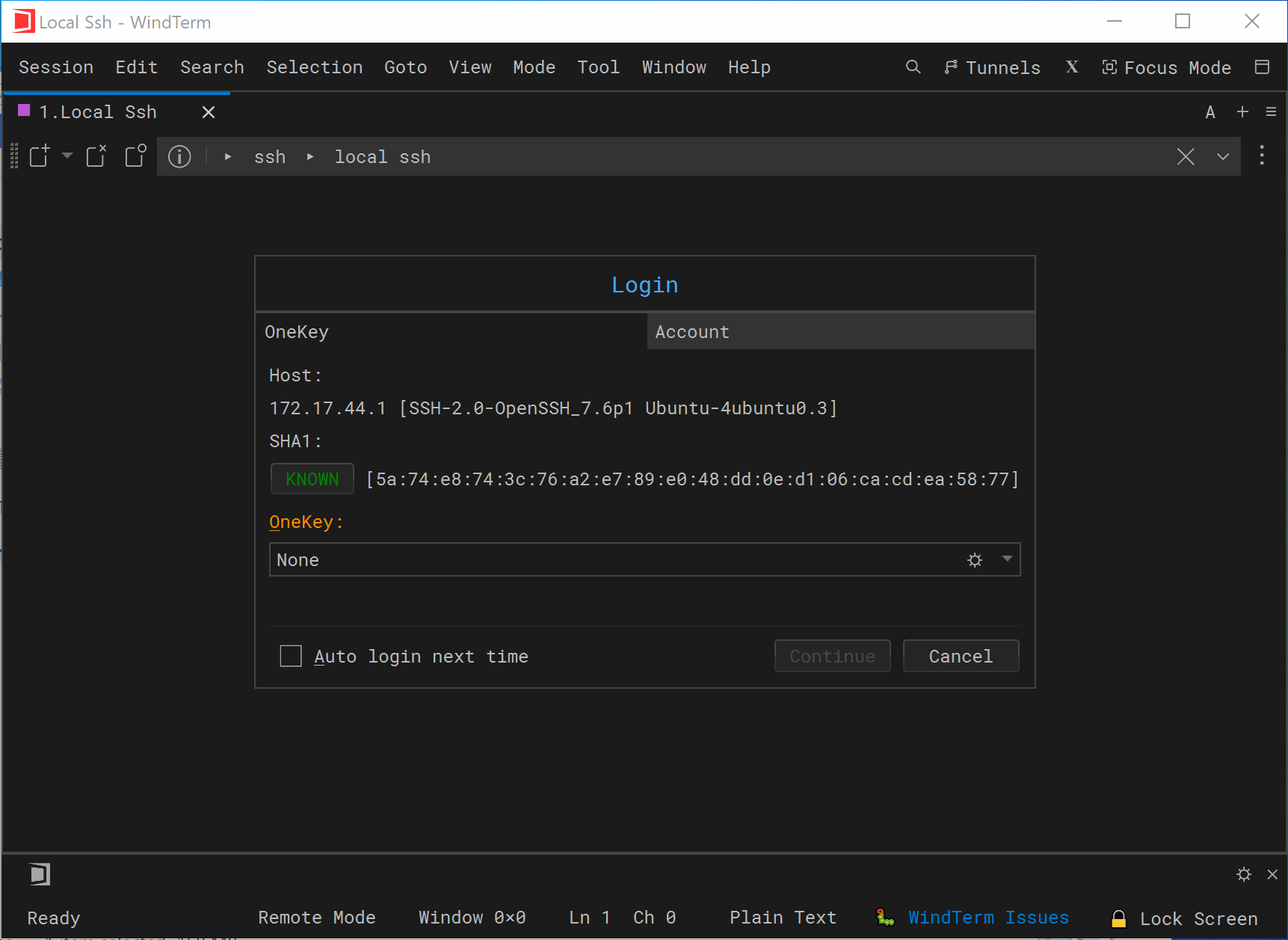Imagine this—you’re sitting in your cozy living room, miles away from your office, but you need to access a server to make some critical changes. What do you do? Panic? Nope! You simply use SSH RemoteIoT. This powerful tool allows you to remotely connect to IoT devices or servers securely, no matter where you are. Whether you’re a tech enthusiast or a professional looking to streamline your workflow, SSH RemoteIoT is your best friend. But how does it work, and where do you even start? Let’s dive into the world of SSH RemoteIoT and unlock its secrets!
Now, let’s be real. The internet is full of tutorials, but not all of them are easy to follow. Some are either too complicated or lack the depth you need to truly understand SSH RemoteIoT. That’s why we’ve crafted this guide—simple, actionable, and packed with the knowledge you need to master SSH RemoteIoT. Whether you’re setting up your first connection or troubleshooting an existing one, this tutorial has got you covered.
So buckle up, grab a snack, and let’s get started. By the end of this article, you’ll be a pro at SSH RemoteIoT. Trust us, you’ll thank yourself later when you’re effortlessly managing remote servers from the comfort of your couch!
Read also:Baylor Vs Duke The Epic College Basketball Rivalry That Keeps Fans On Edge
What is SSH RemoteIoT and Why Should You Care?
Alright, let’s break it down. SSH stands for Secure Shell, and it’s basically a protocol that allows you to securely connect to remote devices over a network. Think of it like a secret tunnel that lets you communicate with your IoT devices or servers without anyone snooping around. RemoteIoT, on the other hand, refers to the ability to manage IoT devices remotely. Put them together, and you’ve got SSH RemoteIoT—a game-changer for anyone working with IoT technology.
Why should you care? Well, in today’s interconnected world, IoT devices are everywhere. From smart homes to industrial automation, these devices are revolutionizing the way we live and work. But managing them remotely can be a challenge, especially when security is a concern. SSH RemoteIoT provides a secure and reliable way to access and control these devices, ensuring that your data stays safe and your operations run smoothly.
Key Benefits of Using SSH RemoteIoT
Here’s the deal—SSH RemoteIoT isn’t just any tool; it’s a powerhouse with a ton of benefits. Let’s take a look at some of the key advantages:
- Security: SSH encrypts all communication between your device and the remote server, keeping your data safe from prying eyes.
- Reliability: SSH connections are stable and can handle even the most demanding tasks, ensuring that your remote operations run smoothly.
- Flexibility: Whether you’re managing a single IoT device or an entire network of devices, SSH RemoteIoT can handle it all.
- Cost-Effective: With SSH, you don’t need expensive hardware or software to manage your remote devices. All you need is a computer and an internet connection.
These benefits make SSH RemoteIoT an essential tool for anyone working with IoT technology. But don’t just take our word for it—let’s dive deeper and explore how it works.
How Does SSH RemoteIoT Work?
At its core, SSH RemoteIoT works by establishing a secure connection between your local device and the remote IoT device or server. Here’s a quick rundown of the process:
- Authentication: First, you need to authenticate yourself to the remote device. This is usually done using a username and password or an SSH key.
- Encryption: Once authenticated, SSH encrypts all communication between your device and the remote server, ensuring that your data is safe from eavesdroppers.
- Command Execution: With the secure connection established, you can now execute commands on the remote device as if you were sitting right in front of it.
It’s like having a virtual handshake with your IoT devices, but instead of shaking hands, you’re sending commands and receiving data. Pretty cool, right?
Read also:Real Housewives Superfan Anna Faris Would Freak Out If Asked To Guest Star I Like To Hide Behind A Character Exclusive
Setting Up SSH RemoteIoT: Step-by-Step Guide
Ready to get your hands dirty? Setting up SSH RemoteIoT is easier than you think. Follow these steps, and you’ll be up and running in no time:
Step 1: Install SSH on Your Local Machine
Before you can connect to a remote IoT device, you need to have SSH installed on your local machine. Most Linux and macOS systems come with SSH pre-installed, but if you’re using Windows, you might need to install it manually.
Pro Tip: If you’re using Windows, consider installing Git Bash or PowerShell to make your life easier.
Step 2: Configure the Remote IoT Device
Next, you need to configure the remote IoT device to accept SSH connections. This usually involves enabling SSH in the device’s settings and setting up a username and password or SSH key for authentication.
Step 3: Connect to the Remote Device
Now comes the fun part—connecting to the remote device. Open your terminal or command prompt and type the following command:
ssh username@remote_device_ip
Replace username with your actual username and remote_device_ip with the IP address of the remote device. If everything is set up correctly, you should now be connected to the remote device.
Troubleshooting Common SSH RemoteIoT Issues
Even the best-laid plans can go awry, and SSH RemoteIoT is no exception. Here are some common issues you might encounter and how to fix them:
- Connection Refused: This usually happens when the remote device isn’t configured to accept SSH connections. Double-check the device’s settings and make sure SSH is enabled.
- Authentication Failed: If you’re getting an authentication error, make sure you’re using the correct username and password or SSH key.
- Network Issues: If you’re having trouble connecting, it could be due to network problems. Check your internet connection and ensure that the remote device is reachable.
With these troubleshooting tips in your arsenal, you’ll be able to tackle most issues that come your way.
Best Practices for SSH RemoteIoT
Now that you know how to set up and troubleshoot SSH RemoteIoT, let’s talk about some best practices to keep your connections secure and efficient:
- Use SSH Keys: Instead of relying on passwords, use SSH keys for authentication. They’re more secure and easier to manage.
- Regularly Update: Keep your SSH software and IoT devices up to date to protect against vulnerabilities.
- Limit Access: Only allow trusted users to access your remote devices. This minimizes the risk of unauthorized access.
By following these best practices, you’ll ensure that your SSH RemoteIoT setup is as secure and efficient as possible.
Advanced SSH RemoteIoT Techniques
Once you’ve mastered the basics, it’s time to take your SSH RemoteIoT skills to the next level. Here are some advanced techniques to consider:
Tunneling
SSH tunneling allows you to securely transfer data between your local machine and a remote server. This is especially useful for accessing services that aren’t publicly accessible.
Port Forwarding
Port forwarding lets you redirect traffic from one port to another, allowing you to access services running on the remote device as if they were running locally.
SSH Multiplexing
SSH multiplexing allows you to reuse existing SSH connections, reducing the overhead of establishing new connections and improving performance.
These advanced techniques can help you get the most out of SSH RemoteIoT, making your remote operations faster and more efficient.
Real-World Applications of SSH RemoteIoT
Now that you know the ins and outs of SSH RemoteIoT, let’s take a look at some real-world applications:
- Smart Homes: Use SSH RemoteIoT to manage and control your smart home devices from anywhere in the world.
- Industrial Automation: Monitor and control industrial equipment remotely, ensuring smooth operations and minimizing downtime.
- Remote Work: Access your office servers and devices from home, allowing you to work efficiently even when you’re miles away.
These applications demonstrate the versatility and power of SSH RemoteIoT, making it an essential tool for a wide range of industries.
Conclusion: Take Your SSH RemoteIoT Skills to the Next Level
And there you have it—your ultimate guide to SSH RemoteIoT. From setting up your first connection to mastering advanced techniques, this tutorial has covered everything you need to know to become an SSH RemoteIoT pro.
So what’s next? Start experimenting with SSH RemoteIoT and see how it can transform the way you manage your IoT devices. And don’t forget to share your experiences in the comments below. We’d love to hear how you’re using SSH RemoteIoT to simplify your life!
Table of Contents
- What is SSH RemoteIoT and Why Should You Care?
- Key Benefits of Using SSH RemoteIoT
- How Does SSH RemoteIoT Work?
- Setting Up SSH RemoteIoT: Step-by-Step Guide
- Troubleshooting Common SSH RemoteIoT Issues
- Best Practices for SSH RemoteIoT
- Advanced SSH RemoteIoT Techniques
- Real-World Applications of SSH RemoteIoT
- Conclusion: Take Your SSH RemoteIoT Skills to the Next Level


